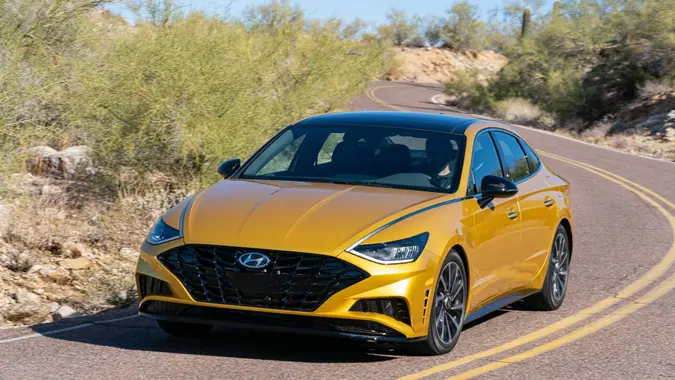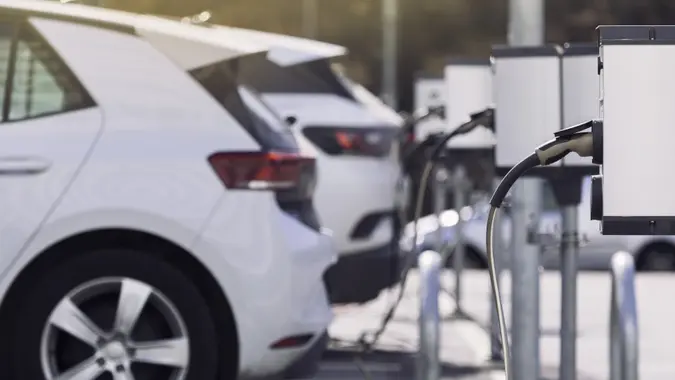4 Things Boomers Should Do With Their Cars in Retirement

Commitment to Our Readers
GOBankingRates' editorial team is committed to bringing you unbiased reviews and information. We use data-driven methodologies to evaluate financial products and services - our reviews and ratings are not influenced by advertisers. You can read more about our editorial guidelines and our products and services review methodology.

20 Years
Helping You Live Richer

Reviewed
by Experts

Trusted by
Millions of Readers
After decades of commuting to work, school drop-offs and chauffeuring kids around town, your car has been the hardest-working part of your family. But now that you’re retired, you probably find that you’re not driving nearly as much, and the car just sits in the garage, especially if your spouse has a car, as well.
Letting your car sit can lead to dead batteries, flat spots in tires and costly repairs that sneak up when you least expect them. Plus, if you’re paying for insurance, registration and upkeep, you might just be wasting money that could go toward travel, hobbies or spoiling your grandkids.
Does this sound like your situation? Then you’ll want to keep reading as GOBankingRates explores four things you should do with your car in retirement. Also find out the various ways retirees are wasting thousands of dollars on car expenses.
Keep It in Shape
You may decide you want to keep your car. It could be a collector’s item, or it could have sentimental value to you. However, if you do, it’s important to keep it well-maintained. Take it out every week so the fluids are circulating through the car’s system.
You also want to make sure it goes through regular preventative maintenance. Most mechanics recommend having your oil changed every 3,000 miles, but if you’re not driving the car much, you can get by with changing it every six to 12 months. While you’re having the oil changed, make sure they rotate your tires.
Reassess Your Insurance Needs
If you’re not driving the car frequently, you’ll also want to reconsider the insurance you carry on the vehicle. Most insurance companies will offer a discounted low-mileage rate when you drive less than 7,500 miles in a year.
You can also consider increasing the deductible if you feel comfortable doing so. This will lower your premium payments. If the car is going to sit in the garage without being driven, you can also switch to comprehensive-only coverage. This protects the car against damage from fire, theft, vandalism, or natural disasters, but does not cover accidents on the road.
Downside or Sell
If you’re still making monthly payments on a car loan or you have a spouse who also has a car, it might make sense to sell the vehicle. This would free up some cash in your budget for other things. If you like having two cars, you could downsize to something less expensive.
Turn It Into an Income Stream
Your lightly-used car could also generate income for you. Platforms like Turo let you rent out your vehicle to the public. However, earning a decent side income depends on the make and model of the car. Newer vehicles tend to earn a higher daily rate compared to older ones with more miles.
 Written by
Written by  Edited by
Edited by 

























